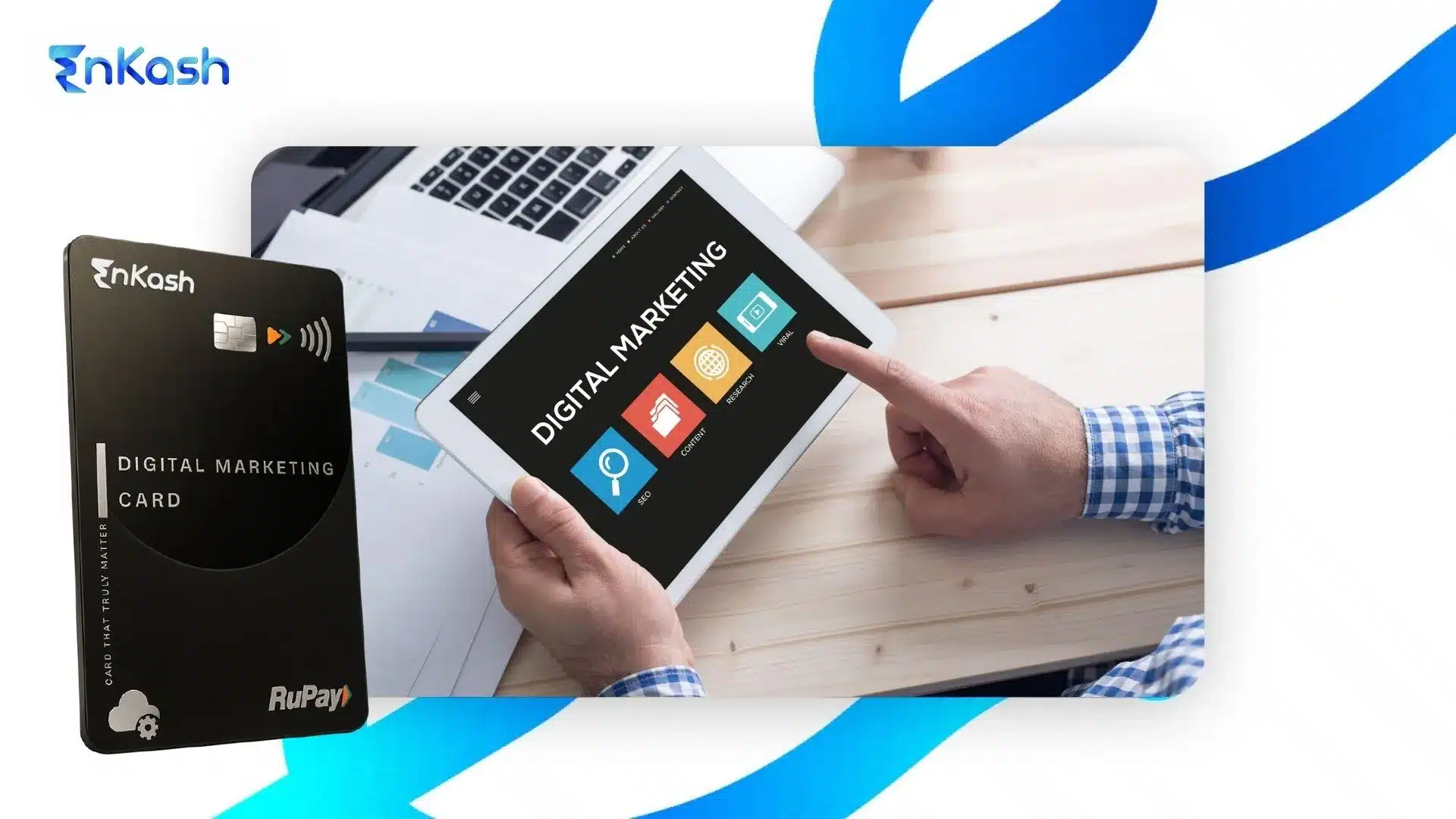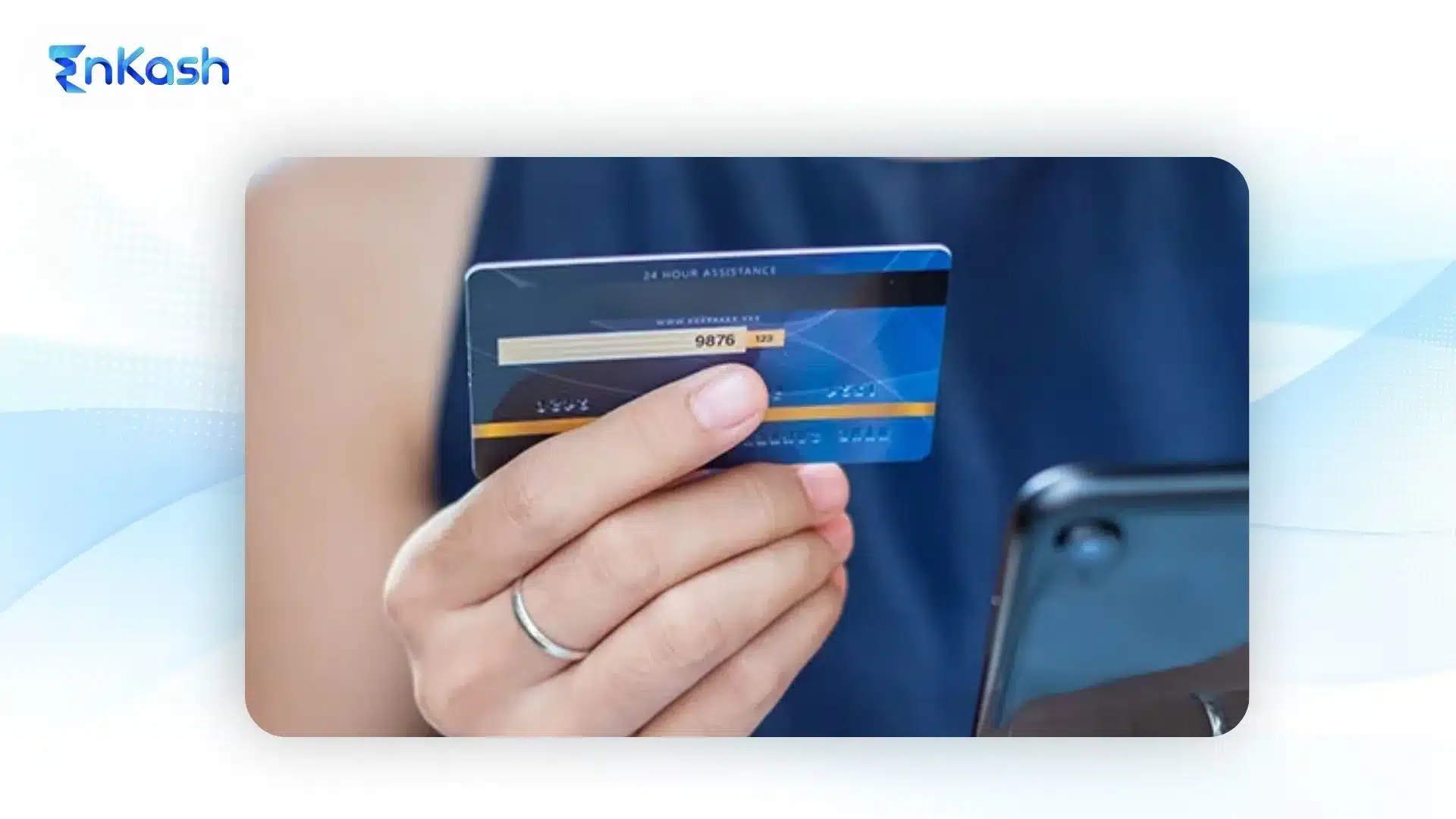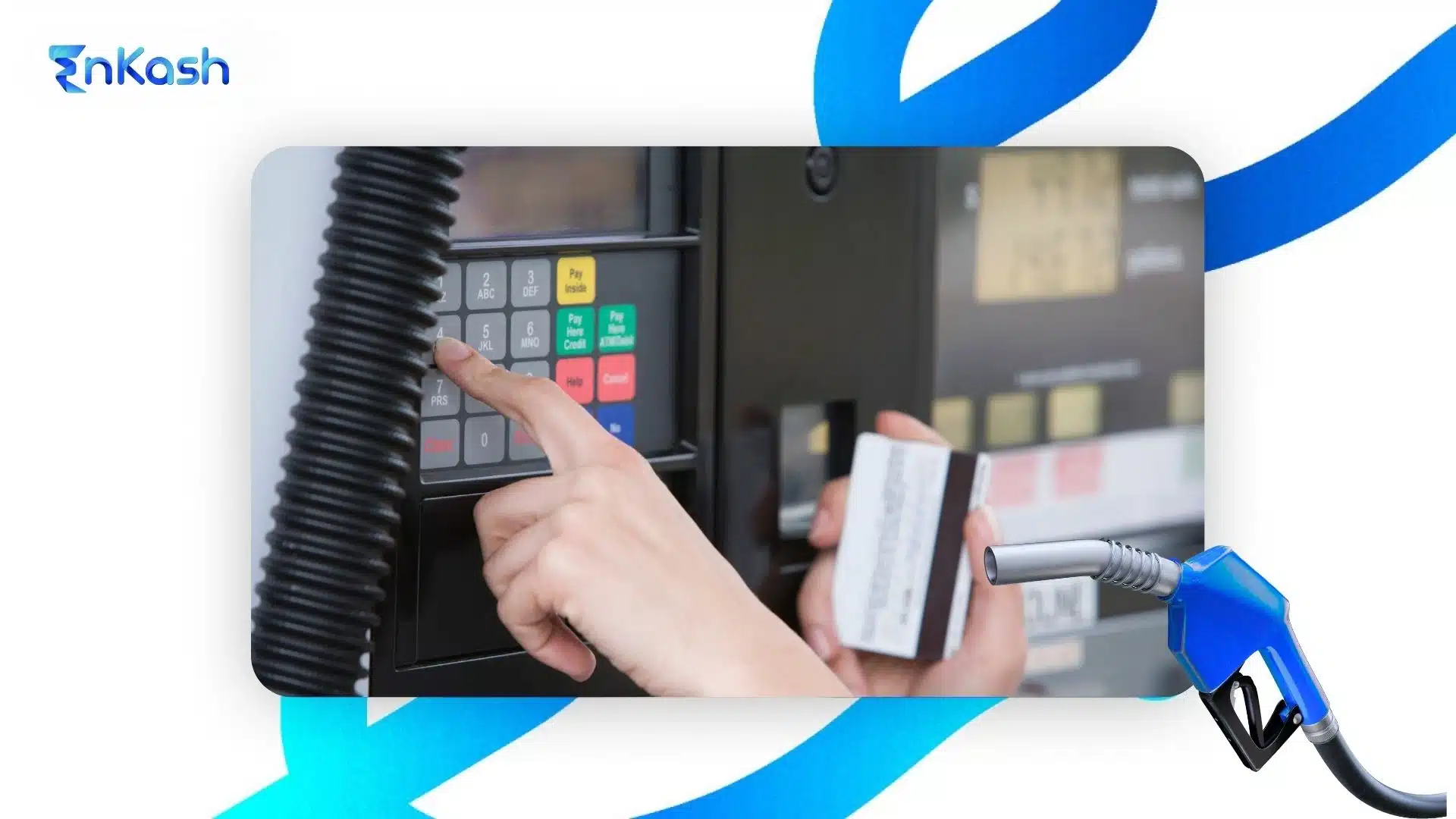What Is a Digital Marketing Card?
A Digital Marketing card is built for one purpose: to handle a company’s advertising spend in a structured way. It might look like a regular payment card when you hold it, yet it serves a very specific role. Rather than covering every expense that flows through a business, it connects directly to marketing activity, search ads, social media campaigns, influencer partnerships, or even the subscription tools that drive promotions.
Think about the process. A business receives a card number, physical or virtual, and links it to whichever platforms they use. Each time that card is swiped or entered, the payment trails back to marketing. Nothing else. The advantage is obvious: cleaner books, tighter spending limits, and less risk than juggling one general card across multiple platforms.
For finance teams, this setup removes the fog. When statements land on their desk, there is no debate about whether the cost went to office supplies, travel, or a campaign. Every line points back to advertising. That single change makes reporting easier, reduces mistakes, and trims hours off monthly reconciliations.
At its core, the Digital Marketing card gives both marketers and finance departments something they rarely share, clarity and control over advertising budgets.
Why Businesses Use Digital Marketing Cards
Managing marketing spend has never been straightforward. Ads run on different platforms, campaigns overlap, and invoices arrive all at once. Pretty soon, the trail of money disappears into a blur. A marketing spend card pulls those costs out from the pile and puts them in their own space, where they can finally be tracked without confusion.
Companies lean on these cards because they offer a kind of control that general cards simply cannot. Each campaign or channel can have its own card. Budgets are loaded in advance. Once the set amount is reached, the card shuts down further charges. That automatic stop keeps overspending in check, no need for constant monitoring or tough conversations after the budget is blown.
There is also the matter of security. Passing around one card number to every ad platform is an open invitation to mistakes or fraud. Digital Marketing cards reduce that risk. Each number is unique, and if something looks wrong, it can be cancelled instantly without breaking other campaigns. A small change, but it gives finance teams peace of mind.
Then there is collaboration. Agencies, freelancers, and internal teams can each be issued their own cards with limits that fit their role. The result: fewer mix-ups, no arguments about who spent what, and a transparent record everyone can see. That kind of clarity builds trust across departments, which is rare enough to matter.
Businesses turn to Digital Marketing cards for a simple reason: they make ad spend easier to handle by adding control, clarity, and accountability.
How Digital Marketing Cards Work
A marketing card with customized spend limits is designed to keep advertising payments under control. The process is straightforward once you see how it moves step by step.
- Step 1: Create the card
A company requests a virtual or physical card from its provider. Virtual cards are common for online ads because they can be set up instantly. - Step 2: Set the rules
Spending limits, expiry dates, and merchant categories are setbefore the card is used. These controls stop extra charges and help manage cash flow. - Step 3: Assign the card
Each card is linked to a specific platform, campaign, or team member. This keeps payments separate and avoids confusion. - Step 4: Use for ad payments
The card number is entered on the chosen platform, such as search engines or social networks. From then on, all ad costs are billed directly to that card. - Step 5: Monitor in real time
Transactions appear instantly in the company dashboard. Finance and marketing teams can see where the money is going without waiting for monthly statements. - Step 6: Adjust or close
If a campaign ends or a budget changes, the card can be paused or cancelled with a single click.
Types of Marketing Cards You Can Choose
Businesses have different ways of managing their ad spend, and the type of card chosen makes a real difference. Marketing cards are available in a few main forms, and each option brings its own advantage.
Credit marketing cards
These allow campaigns to run first and payments to be made later. They are flexible but need careful monitoring to avoid overspending.
Charge marketing cards
These require the full balance to be cleared each cycle. They suit companies handling high-volume campaigns that demand strong financial discipline.
Debit marketing cards
Spending is limited to the account balance. This keeps campaigns within safe limits and is useful for smaller teams or tighter budgets.
Prepaid marketing cards
Loaded with a fixed amount before use. Once the balance ends, spending stops, making them ideal for controlling individual campaign budgets.
Virtual marketing cards
Issued instantly online without plastic. Each card can be dedicated to one platform or vendor, which keeps payments secure and easy to track.
The choice of marketing cards depends on how a business wants to balance flexibility, control, and security across different advertising channels.
Why Prepaid Cards Work Best for Ads
When it comes to controlling advertising costs, a prepaid card for digital marketing often proves to be the most reliable choice. It gives clear spending boundaries and removes the risk of surprise charges.
Here is how it helps:
- Fixed budget for campaigns
Money is loaded onto the card before a campaign begins. Once the balance is used, the spend stops automatically, keeping ads from going over budget. - Greater control over vendors
Each card can be assigned to a single platform or partner. This keeps payments separated and makes it easy to track costs by channel. - Safer than general cards
Because the card carries a limited balance, exposure is reduced. If the number is ever compromised, only the loaded amount is at risk. - Easy to scale across teams
Companies can issue multiple prepaid cards for different campaigns or departments. Each one comes with its own limit, which simplifies tracking. - Useful for short-term projects
For seasonal campaigns or trial runs, a prepaid setup ensures spending stays in line with the project.
In short, prepaid cards provide marketers with structure and peace of mind when managing ad budgets.
Setting Up Digital Marketing Cards in Your Company
Getting started with a digital marketing card system is easier than many think. A clear process ensures that every team member spends within limits and finance teams see where every rupee goes. Here’s a step-by-step way to set it up:
- Choose the right provider
Select a platform or bank that offers virtual cards, strong controls, and accounting integrations. - Define spending rules
Decide limits for campaigns, departments, or individuals. Set expiry dates and lock cards to marketing vendors. - Issue cards to your team
A prepaid card for marketing team members or agencies can be created instantly. Each card is tied to the user’s role or project. - Connect cards to ad platforms
Add card details to search, social, or video platforms so campaigns run without payment disruptions. - Monitor in real time
Use dashboards to see transactions as they happen. Finance can track spend without waiting for statements. - Review and adjust
When projects end or budgets change, cards can be paused or cancelled. New cards can be created for fresh campaigns.
This setup creates accountability, prevents overspending, and keeps marketing and finance working in sync.
Budgeting Smarter With Prepaid Cards
Budget control is one of the main reasons businesses adopt digital marketing cards. It is very easy for campaigns to go over the planned budget if payments are connected to a single general card. A prepaid setup changes this by setting hard boundaries from the start.
When companies manage ad budgets with prepaid card systems, they know exactly how much will be spent on each campaign. The balance is loaded in advance, and when it is finished, the card simply stops working. This protects against accidental overspending and removes the stress of manually monitoring limits.
It also creates a habit of discipline across the team. Marketers begin to plan campaigns around the funds available instead of letting costs rise unchecked. Finance teams get peace of mind, and marketers get a clear picture of what is left to spend without digging through reports.
Tracking and Reconciling Marketing Expenses
Clear records are essential when advertising budgets grow across different platforms. Without the right tools, finance teams can spend hours sorting through bills, invoices, and receipts. This is where marketing expense tracking with dedicated cards makes a real difference.
Each digital card is linked to a specific campaign, platform, or vendor. When statements arrive, every charge is already labeled by purpose. Instead of searching through long lists of transactions, the finance team can match invoices to card statements within minutes. This shortens the closing process and reduces the chance of errors.
Cards for marketing expenses also simplify audits. Each payment has a clear owner, a set limit, and supporting documents. Auditors or managers can see a full trail from campaign approval to final spend. This transparency builds trust between marketing and finance while keeping tax records in order.
In simple terms, the right cards turn complex reconciliation into a smooth and reliable routine.
Keeping Payments Secure and Compliant
Security is a major concern for any business spending heavily on ads. Using general cards across multiple platforms creates exposure and increases the risk of fraud or errors. Dedicated marketing cards help reduce this risk by giving each platform or campaign its own payment channel.
When a card number is tied to a single purpose, it is easier to monitor and control. If a card is compromised, it can be paused or cancelled without disrupting other campaigns. This limits the damage and prevents downtime in advertising.
Compliance is another important factor. Many regions require extra steps for recurring payments, such as additional security checks. By issuing separate marketing cards, companies can manage these checks more smoothly. Finance teams can also track approvals and maintain records that show every payment followed proper rules.
Together, these steps protect both the company’s money and its reputation, ensuring campaigns run without avoidable payment disruptions.
Paying for Ads Across Different Platforms
Most marketing budgets are spread across multiple channels. A company may run search campaigns, sponsor posts on social media, and promote videos on streaming platforms. Handling all these payments with a single card creates confusion and increases the chance of errors. A dedicated card for digital ad spend brings order to this process.
By assigning one card to each platform, payments stay separate and easier to track. For example, a card linked only to search advertising will show every transaction from that account. Another card may be set aside for social campaigns, while a third supports video ads. This approach reduces overlap and makes financial reports clear.
Using multiple cards for marketing expenses also prevents disruptions. If a card tied to one platform is paused or cancelled, campaigns on other platforms continue without interruption. This method gives finance teams cleaner records and marketers uninterrupted campaigns.
Handling Global Ads and Currency Issues
Running international campaigns means dealing with different currencies and hidden costs. Exchange rates, card fees, and platform settings can all affect the final bill. Using a dedicated card for digital ad spend makes these challenges easier to manage. Here is how businesses can handle them:
- Check platform currency settings
Always align the ad account with the currency you want to pay in. - Watch foreign exchange charges
Card providers may add a markup on each transaction. Knowing the rate helps forecast costs. - Use multi-currency cards
Some providers offer wallets in different currencies. This reduces conversion losses. - Assign cards by region
Separate cards for regional campaigns keep expenses clear and reduce confusion at reconciliation.
Best Practices for Agencies and Brands
Agencies and in-house teams handle ad spending in very different ways, but both benefit from using dedicated marketing cards. The main difference lies in how the cards are organized and assigned.
For agencies, the best practice is to issue a separate card for each client. This keeps accounts clean and ensures there is no mix-up between projects. It also makes client reporting easier, as every payment is tied directly to that client’s campaigns.
For in-house teams, cards can be divided by channel or department. One card may cover search campaigns, another may cover social media, and a third may be used for analytics or creative tools. This structure helps teams stay accountable and keeps finance departments fully informed.
Multi-brand businesses or marketplaces benefit from setting up cards by brand or region. This way, managers see a full picture of spend without blurring results. No matter the model, the rule is the same: clear card assignment keeps campaigns, reports, and budgets under control.
Conclusion: A Smarter Way to Pay for Marketing
A Digital Marketing card gives businesses the control they need over advertising spend. By assigning budgets, setting limits, and keeping payments separate, companies reduce risk and save time. Finance teams gain clarity, and marketers work with fewer interruptions. For any business that wants cleaner processes and better accountability, digital marketing cards are a smarter, more reliable way to pay for campaigns.
FAQs
1. How is a Digital Marketing card different from a regular business card?
A Digital Marketing card is designed only for advertising and campaign costs, while a standard card covers all expenses. By separating marketing payments, businesses can control budgets more tightly, simplify expense tracking, and avoid confusion when reviewing statements or preparing reports for campaigns.
2. Can Digital Marketing cards help reduce failed ad payments?
Yes. When each platform has its own card for digital ad spend, the risk of disruption drops. These cards can also be updated or replaced instantly, which reduces failures caused by expired numbers and keeps campaigns running without interuptions.
3. Do Digital Marketing cards support real-time tracking?
Most marketing cards allow live tracking through dashboards that display transactions as they occur. This provides immediate visibility into ad budgets, helps teams measure ongoing performance, and supports marketing expense tracking without waiting for end-of-month statements or lengthy reconciliation work.
4. Are prepaid Digital Marketing cards safer than credit-based cards?
A prepaid card for digital marketing carries only the balance loaded onto it. If the number is compromised, the exposure is limited to that amount. This makes it safer for campaigns and trial projects compared with open credit lines that expose larger amounts.
5. How do Digital Marketing cards improve collaboration between finance and marketing?
With cards for marketing expenses, each campaign or team member can be given a separate card with clear limits. This makes spending transparent, reduces disputes, and helps finance teams monitor costs accurately while marketing teams focus on campaign performance without payment delays.
6. Can Digital Marketing cards connect with accounting systems?
Yes. Marketing cards can sync transactions directly with expense management and accounting platforms. This simplifies marketing expense tracking, ensures invoices match with payments, and makes audits easier by keeping campaign costs clearly separated from other business expenses.
7. What happens if an ad platform declines a Digital Marketing card?
If a card for digital ad spend is declined, the common causes are mismatched billing details or expired credentials. The solution is to update the information, issue a new virtual card, or adjust the limit. Most platforms readily accept dedicated marketing cards.
8. Can Digital Marketing cards be issued to external agencies?
Yes. A business can assign a prepaid card for marketing team members or agencies. Each card has its own cap, and all payments are traceable. This improves accountability, avoids overspending, and gives clients and finance teams a clear view of where advertising funds are going.
9. Do Digital Marketing cards work for subscription-based tools?
Yes. A marketing spend card can be dedicated to subscriptions such as analytics or creative tools. This prevents recurring costs from mixing with campaign budgets. It also allows easy cancellation by shutting down the card, making expense control simple and effective.
10. What size of business benefits most from Digital Marketing cards?
The benefits of digital marketing cards for businesses apply across all sizes. Small companies use them for strict budget control, while larger teams use them to organize spend by department, channel, or region. The result is cleaner reporting, safer payments, and stronger financial discipline.








